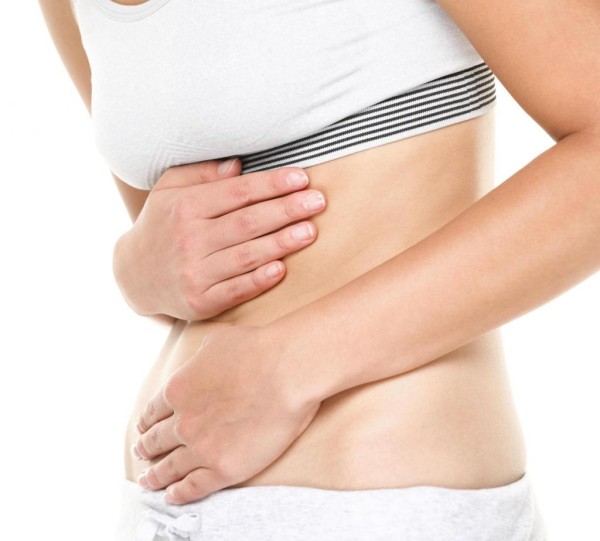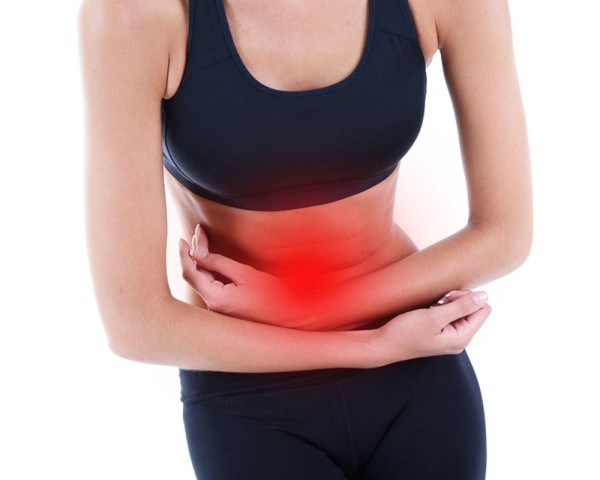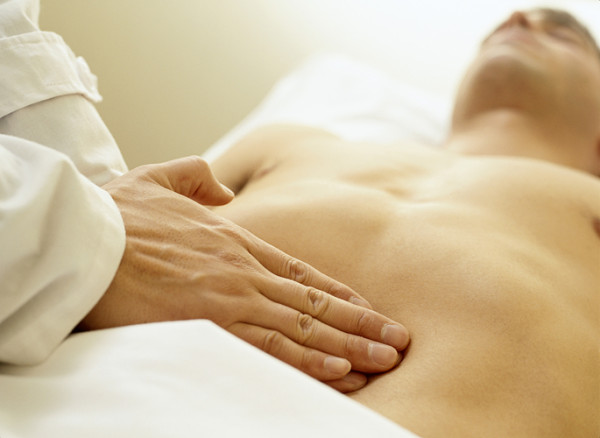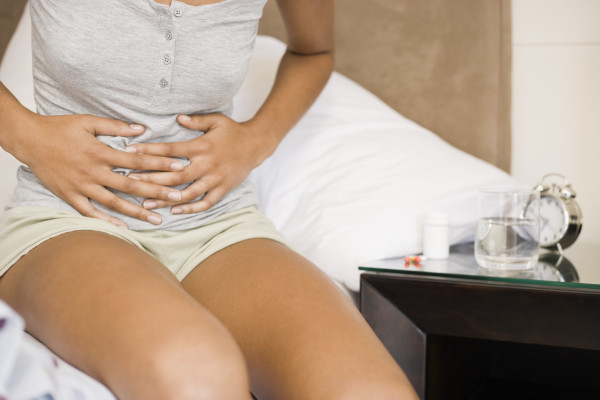Ulcer: causes, symptoms and treatment
An ulcer is a chronic disease in which trophic lesions appear on the mucous membrane of the duodenum or stomach. Most often, this disease is diagnosed in the interval of 20-50 years. The disease is characterized by regular inflammation, which mainly occurs in the spring and autumn. The main cause of this disease frequent stress, but that's not all. We will talk today about why an ulcer occurs, whether it can be cured and prevented.
Content
Ulcer causes
There are a great many reasons why a disease can begin to emerge. In addition, given the varieties of the disease, and we will talk about them a little later, it has its reasons. But there are those that can lead to the development of any kind of disease. The main provocateurs are:
- prolonged use of certain types of drugs;
- abdominal trauma: a wide variety of burns (both internal and external), blows and bruises, frostbite, etc.;
- the development of parallel diseases such as tuberculosis, cirrhosis of the liver, syphilis, diabetes etc.
Doctors noticed a pattern according to which in 40% of cases in patients with an ulcer, a similar ailment was diagnosed in close blood relatives. This is direct evidence of a hereditary predisposition.
But that's not all. There is a list of certain circumstances in which the risk of ulcers increases significantly:
- any kind of smoking, be it hookahs, cigars, cigarettes;
- abundant drinking of carbonated drinks and strong coffee;
- persistent or frequent depression and stress;
- violations in the rules of nutrition;
- long-term use of anti-inflammatory medications;
- long-term intake of too cold or excessively hot liquids and food;
- addiction to alcohol.
Types of ulcers
There are several types of stomach ulcers, including:
- chronic;
- stressful;
- perforated;
- callous;
- mirror;
- antrum section of the stomach;
- cardiac department;
- peptic;
- with Zollinger-Alison syndrome;
- medicinal.
Let's consider each of the types a little.
Chronic... This type appears with a slow and prolonged course of the disease. In addition, if the aggravated type of ulcer does not heal for a long period of time, it can also lead to a chronic course of the disease. About a third of all patients have just this kind of disease. Without special diagnostics, it is almost impossible to say when one stage of the sore passed into another. The main signs of a chronic ulcer are severe heartburn, a regular feeling of nausea and vomiting after a meal, as well as a feeling of heaviness in the abdomen, to this are added severe pain. Chronic ulcers are characterized by seasonal periods of exacerbation.
Kalleznaya... One of the most dangerous types of ulcers, which often becomes a precursor stage of cancer. In some cases, it can remain open for a long time, without traces of scarring. More often appears after chronic, therefore, it has similar symptoms. Treatment in the majority of cases implies an operable method, due to the fact that the conservative method does not give satisfactory results, at best it can help to reduce the severity of the manifestation of symptoms.
Peptic... It is located on the gastric mucosa, progressing most often as a complication after surgery. The impetus for development is the presence of an infection of Hilectobacter Pyloria, or the intake of certain medications. The main symptomatology is powerful cutting pain, while felt throughout the abdomen, during a period of hunger, often vomiting (blood clots can be seen) and nausea, sharp weight loss, diarrhea bloody and loss of appetite. As soon as symptoms are noticed, you should immediately consult a doctor.
Mirror. The onset of a sore begins with the appearance of a defect on the mucous membrane under the influence of prolonged inflammation. Under the action of stomach juice, a depression is formed, affecting several levels of the walls of the organ at once. A clear sign of this type of ulcer is severe pain that does not go away for a long time. Unpleasant sensations arise at any time, both before and after a meal. In some cases, pain can be felt when walking. Mirror ulcer is very difficult to treat.
With Zollinger-Elyson syndrome... It is also called an endocrine ulcer. It occurs during a sharp increase in the secretion of gastric juice, which is explained by an increase in the amount of gastrin in the blood. Symptoms are similar to other types of illness, including nausea, pain and vomiting. The only difference is the rate of development of pain syndrome. The pain occurs very sharply and is acute. The severity of the disease lies in the problem of treatment: neither a conservative nor an operable method can guarantee success.
Medicinal, it is also medicinal. Appears against the background of taking certain types of drugs. These are NSAIDs, Acetylsalicylic Acid and Corticosteroids. The disease often goes away with absolutely no symptoms, so many "carriers" do not even suspect that they have an ailment. However, with an exacerbation, it can make itself felt in the form of bleeding and severe severe pain, and the patient's condition itself can worsen significantly.
Cardiac department. This type of disease is extremely rare, only 4% out of a hundred and is exclusively seasonal. It is often accompanied by irregular pain after a meal, the presence of a bitter taste in the mouth, regular belching and a feeling of heaviness during times of hunger. Obvious signs can also be called plaque in the patient's tongue and the appearance of pleurisy. Most of the cases are diagnosed in middle-aged men. The disease is characterized by three stages: mild, moderate and severe. The first two respond well to conservative treatment, but the latter is often operated on. At a severe stage, the disease accompanies the patient almost constantly.
Antaral department... Occurs at the site that separates the stomach and duodenum. The antrum is the last place food passes through before being transported to the intestines. Most often, patients with such an ulcer are young people. Diagnosis occurs in 9% of a hundred. The main symptoms of the disease are heaviness in the middle part of the abdomen, pain of an impulsive nature (it comes and goes), frequent bouts of vomiting with a sour taste, acute heartburn, increased acidity of stomach juice. The disease is treated only in a complex manner. An operable method of treatment is prescribed only in rare and most severe cases.
Stressful. The name speaks for itself. It is often diagnosed with prolonged depression. The fact is that at the time of depression in the body in an enhanced mode, adrenocorticotropic hormone is produced, which reduces the amount of mucus produced in the stomach and significantly worsens its quality, due to which its function is reduced or completely lost. In addition, catecholamines, which are also secreted in the body in a state of depression, lead to the formation of ischemia (i.e., insufficient blood supply) of the mucous membrane. A stress ulcer is characterized by severe, sharp, sharp pain, and bleeding is often noted. The mortality rate for this type of ulcer varies within five percent. Timely treatment can reduce the manifestation of symptoms and get rid of the disease.
Perforated. One of the most severe types of disease, or rather complications, in which a through hole in the organ is noted. This leads to the fact that food can enter the abdominal cavity along with stomach juice, and this already causes inflammatory processes. The danger of the disease is confirmed by statistics, which show that every sixth case ends in death. The cause of such an ulcer can be anything - disturbances in dietary nutrition, which doctors prescribe with an existing ulcer, prolonged severe depression against a background of psychological shock, seasonal exacerbations. Symptoms of a perforated ulcer include: painful shock, which lasts from four to six hours, then there is an imaginary calming down (the pain disappears for a while), which is due to the burning of nerve endings, the third symptom is sepsis, which occurs after 12 hours, at this moment the ulcer expires in powerful streams of pus. Some people get bleeding. In this case, urgent intervention of the surgeon is required.
An ulcer can also develop against the background of other ongoing diseases. These provocateurs include: problems with the heart and blood vessels, kidneys, liver, gastritis and pancreatic disease.
What can be done with an ulcer and what can not be eaten with an ulcer
When diagnosing an ulcer, a specialist always prescribes a special diet for the patient, which will help not to develop the disease further.
There are general rules to be followed with a wellness diet:
- Balanced diet. It is impossible to deprive the ulcer in terms of calories, just the daily diet should be as balanced as possible, and as for the energy value, the level should not be lower than 3000 kcal.
- Fractional food. The intervals between meals should not be more than three hours.
- Eat small meals. The optimal serving size is one that fits in your palms folded together.
- Fried and smoked foods are strictly prohibited.
- In no case should you eat too hot or too cold food, the same rule applies to drinks. Any food that has a temperature above or below 30 ° C negatively affects enzyme formation and it also slows down the regenerative functions of the gastric epithelium. This rule is especially serious for the period of exacerbation.
- Completely refuse food, which contributes to increased gas formation.
- Reducing or completely avoiding salt intake.
- Increase in the amount of water you drink, at least two liters. However, here you need to be as careful as possible, it is important that there are no problems with the endocrine and urinary systems.
- Complete exclusion of alcoholic beverages.
- Meals exclusively on boiled, stewed and steamed dishes.
- Introduction to the diet of foods that do not irritate the walls of the stomach.
- Meals at a zigzag pace. This principle is based on the fact that prohibited foods are introduced into the diet at some intervals, followed by a return to proper nutrition. Thus, the "charging" of the gastrointestinal tract is organized. But in no case should this be done during an exacerbation.
- The menu for the ulcer should be compiled on an individual basis, based on the type of disease, the complexity of the course of the disease, the duration, the presence of concomitant diseases and much more.
The terms during which you need to follow a strict diet fall on average for a year, from the moment of the exacerbation period. The purpose of dietary nutrition in this case is to help the digestive tract organs recover as soon as possible.
And now we give a generalized list of what you can and cannot eat with peptic ulcer disease.
| Prohibited foods | Allowed Products |
| Broths of meat and fish that have been subjected to primary boiling | Bread made from wheat flour, but not fresh, but a day after preparation |
| Cabbage soup with sauerkraut and okroshka | Unleavened baked goods without the use of yeast, only in minimal quantities. You can take cottage cheese, lean meat, fish and apples as a filling. |
| Any fish and meat fried | Unsweetened rusks, biscuits and biscuits |
| Smoked meats and sausages (some types of sausages are allowed in the zigzag diet) | Secondary broth from meat and fish. After the first boiling, the broth is completely drained and replaced with clean water. The newly boiled broth is recommended for consumption. |
| Canned food, including pates | Soups with milk with cereals and pasta |
| Fermented milk products: kefir, tan, ayran, etc. | Soups from cereals without the use of meat |
| High fat dairy products, cheeses and condensed milk | Lean meat dishes. It is advisable if the meat will be passed through a meat grinder. those. cutlets, meatballs, meatballs, etc. are welcome. |
| Hard-boiled eggs and scrambled eggs (soft boiled) | Diet fish and dishes from it, the same fish cakes |
| Wild rice, barley, granulated bran, muesli, corn | Low-fat dairy products: milk, cottage cheese, cheese, yoghurt, fermented baked milk, sour cream, etc. |
| Vegetables with fiber, as they make it difficult to digest | Eggs, soft-boiled or steamed omelette |
| Cucumbers, tomatoes and tomato paste | Cooked pasta and cereals. Buckwheat, rolled oats, white rice and semolina are useful. |
| Herbal products that irritate the mucous membranes: garlic, radish, onions, etc. | Before a meal, fruits and berries should be peeled and mashed. Baked apples and pears are acceptable |
| Berries with a high acidity level: cranberries, citruses, grapes, currants, etc. | For dessert, marmalade, marshmallow, marshmallow, honey, jam, jelly, mousse, cream and jelly are allowed |
| Nuts and dried fruits | The best drinks for ulcers are rose hips, freshly squeezed juices (with a reduced concentration of water), weakly brewed teas and compotes, cocoa |
| Soda | In small quantities, unrefined oils are allowed, as well as butter, but unsalted |
| Alcohol | To ennoble dishes, it is permissible to use milk sauce |
| Pastry and rye bread | |
| Ice cream and chocolate | |
| Strongly brewed drinks: coffee, tea, cocoa | |
| Salty and hot sauces and spices: horseradish, adjika, vinegar, ketchup, mustard |
Stomach ulcer treatment
Unfortunately, the mechanisms of the restorative process of the gastric mucosa are not fully understood. On the one hand, it is clear that the main provocateur of the disease are bacteria of a certain type, but on the other hand, proper nutrition, good immunity and a stable psychological state will not allow them to multiply and peptic ulcer disease will not appear. That is why the approach to the treatment of ulcers must be comprehensive. Correct therapy should include:
- taking medications that the doctor prescribes;
- absolute adherence to the established framework and nutritional rules;
- correction of the psychological sphere and rejection of addiction to addictions;
- treatment within the walls of sanatoriums;
- carrying out the operation, if necessary.
Medicines used to treat ulcers are divided into three types: histamine receptor blockers, antibiotics, and PPIs. In addition, various medications are used to help speed up the healing process.
The treatment regimen is divided into one or two stages, here is a rough description of each:
- Stage one - it lasts about a week. During this time, the patient is prescribed a course of several antibiotics and auxiliary drugs. The goal of this stage is to destroy harmful bacteria. The good news is that in 95% of cases everything goes well.
- The duration of the second stage is a couple of weeks. It is organized if, after the end of the first, residual bacteria have been identified. They also take antibiotics here.
Modern pharmacology offers a wide selection of a wide variety of drugs that help get rid of the disease, but such availability does not mean the possibility of self-prescription. Each ulcer is individual and requires “its own” treatment. Seek help from a gastroenterologist and he will prescribe drugs that will be as gentle and as effective as possible.
Intestinal ulcer treatment
As in the case of the stomach, intestinal ulcers are treated with a course of taking two antibiotics at the same time. In addition, aids are taken that help to "neutralize" the acid in the stomach and to recreate a protective film on the mucous membrane of the organ.
Comprehensive treatment includes following a healthy diet and diet as prescribed by your doctor. It is necessary to give up addictions (smoking, alcohol, etc.). Surgical treatment of intestinal ulcers is prescribed only in the most severe and advanced cases. However, if you seek the help of specialists in a timely manner, then the treatment is much more effective, without the need for an operation.
Alternative treatment of ulcers
Here are some effective recipes that will help in the treatment of ulcers. However, even with this, it is imperative to consult a doctor, since some of the recipes have contraindications, for example, with increased acidity of the stomach, etc. Be careful!
- Take raw potatoes, peel them and pass them through a juicer (you can squeeze the juice by rubbing the vegetable through a fine grater). Half an hour before meals, you need to drink 20 g of potato nectar, three times a day. In the second week, the amount of juice should be doubled, in the third by three, and from the fourth to the end of the month, the portion is 100 g.
- Combine 5 g of medical alcohol with a fresh chicken egg and drink on an empty stomach. After a couple of hours, heat 30 g of an aqueous tincture of chaga mushroom and drink. After half an hour, you can have breakfast. The infusion must be made in a ratio of one to five. The mushroom needs to be washed and poured with hot water, but not boiling water, and insist for a day.
- Pour 15 g of dry St. John's wort with a glass of boiling water, place in a thermos and let it brew overnight. Then strain and add boiled water in order to replenish the volume of the drink to 200 ml. The finished composition is drunk in a volume of 50 ml half an hour before a meal in a warm form, three to four times. The duration of such treatment should be at least two weeks. Then you can repeat the course, with a break of a week or two.
- Mumiyo needs to be dissolved in 50 ml of milk. The amount of the latter is determined based on the patient's weight: for example, for 70 kg of weight, you need to take 0.2 g, and for the next 10 kg, add 0.1 g. The duration of the course is 25 days, with the possibility of a second course in ten days.
- Take a liter of natural fresh milk and 50 g of fresh propolis. Combine the components and heat until the propolis is completely dissolved. The finished composition is taken 100 g half an hour before a meal. The duration of the course should be at least a month, however, in severe and neglected cases, the duration of treatment can be extended.
- In a glass of warm milk, you need to dissolve 5 g of natural honey and the same amount of calendula oil. Mix everything well and take in the morning, about an hour before breakfast.
- Squeeze the juice from the leaves of the plantain and drink it three times a day in the amount of a tablespoon before meals. But with the above recipe, you need to be very careful, and start the reception with 0.5 small spoon.
- Brew a large spoonful of plantain seeds with half a glass of boiling water. The ready-made infusion is taken three times a day in the amount of a large spoon.
Prevention of ulcers
Prevention should be carried away by both absolutely healthy people, in order to prevent the development of the disease, and ulcers, in order to protect themselves from an exacerbation of the disease. Prevention can be divided into three groups:
- The first one is aimed at eliminating risk factors and reducing the likelihood of relapse.
- The second is aimed at suppressing the level of risk of exacerbations and manifestations of the existing disease.
- The third is to prevent the possibility of complications.
In practice, experts talk only about the first two groups, since the second and third groups do not have serious differences between themselves, therefore there is no need to distinguish between them and organize special actions. Each group has its own methods. Let's take a look at some of them.
Primary preventive measures
- Observe the rules of personal oral hygiene, treat your gums and teeth on time. Diseased teeth are a breeding ground for bacteria, which then enter the stomach. In addition, with sick teeth, it is problematic to thoroughly chew food, and this is a strong load on the stomach.
- Eat a healthy diet and stick to your regimen. A very healthy habit is to eat at the same time. Limit junk food, such as smoked meats, heavily fried and fatty foods. Observe the temperature regime in food, it should not be very hot or, conversely, cold.
- Taking vitamin complexes in order to prevent vitamin deficiency.
- Quitting smoking and alcohol.
- Preventive measures to prevent hormonal disruption.
- Introduce moderate exercise into the habit.
- If possible, try to avoid taking a wide variety of medications. Try to adhere to the recipes of traditional medicine, or even better, just prevent ailments by strengthening immunity... And even more so, do not take drugs that have not been recommended by doctors.
- Prevention of infection with Helicobacter pylori bacteria, which includes the use of personal towels, dishes and limit the number of kisses.
Secondary preventive measures
- Visiting sanatoriums and resorts.
- Regular observation by a gastroenterologist.
- Compliance with a special diet based on proper nutrition.
- Regular sanitation of organs in which foci of inflammation may occur.
It is also worth noting that in secondary prevention, measures from the primary will also be appropriate. It is also important to lead a measured lifestyle and not be drawn into various stresses and depressions, since they contribute to the appearance of peptic ulcer disease, and the ailment that has arisen on this basis is very difficult to treat.











